AGRONOMICSUPPORT
YOU CAN TAKETO THE FIELD
Expanding Data with On-Farm Research
With planting season underway in the south and around the corner for much of the Midwest, farmers over the past few weeks have been busy planning and getting everything ready to go. From getting planters checked to field-by-field planning, farmers have found plenty of things to keep themselves busy. Over the past several years with advances in equipment and technology, more growers today implement on-farm research to help better themselves and their operation. Regarding on-farm research, let’s look at some of the ways we can implement this on farms today.
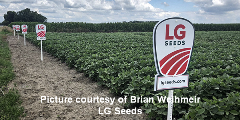 Strip Trials is probably the most common form of research we see across the countryside. The nice parts about strip trials is the relatively small amount of acreage and inputs it takes to conduct these trials. We can also easily add checks and borders to set up the trial. It also puts us at ease since it is very familiar to a lot of us. The downside to strip trials is the time it takes to implement these trials and the small amount of error it takes to possibly skew the data.
Strip Trials is probably the most common form of research we see across the countryside. The nice parts about strip trials is the relatively small amount of acreage and inputs it takes to conduct these trials. We can also easily add checks and borders to set up the trial. It also puts us at ease since it is very familiar to a lot of us. The downside to strip trials is the time it takes to implement these trials and the small amount of error it takes to possibly skew the data.
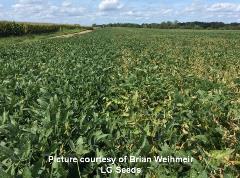 Split Planter is a nice form of research for growers to get larger amounts of data and to replicate real field conditions. The other nice part about split planter trials is that there is little added time during planting to conduct these trials. It also gives us added flexibility to measure using either a weigh wagon or yield monitor. The downside to split planter trials is the limited number of products you can use in your test.
Split Planter is a nice form of research for growers to get larger amounts of data and to replicate real field conditions. The other nice part about split planter trials is that there is little added time during planting to conduct these trials. It also gives us added flexibility to measure using either a weigh wagon or yield monitor. The downside to split planter trials is the limited number of products you can use in your test.
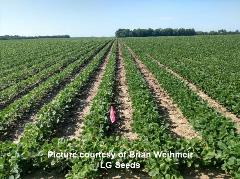 Side by Side trials allow us to test large acreage on our farm and can make preparation for testing easier. The only downside to this trial is the amount of variability in the field that can be seen on one side vs the other. With the use of digital ag tools to record product placement and performance, this form of testing can be measured easier today than in the past.
Side by Side trials allow us to test large acreage on our farm and can make preparation for testing easier. The only downside to this trial is the amount of variability in the field that can be seen on one side vs the other. With the use of digital ag tools to record product placement and performance, this form of testing can be measured easier today than in the past.
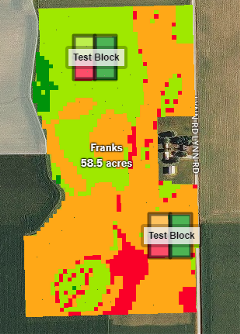 Zone Testing is a form of on-farm research that is relatively new, and some may not be familiar with, at least in regard to planting and harvest. In zone testing we isolate specific variables in the field and make changes to rates, hybrids, etc. The challenge with this form of research is how we measure the performance of each specific zone. Let’s look at variable rate seeding. Here is a picture of a variable rate prescription. It is challenging for us to measure each rate across the field and if that rate was the correct population.
Zone Testing is a form of on-farm research that is relatively new, and some may not be familiar with, at least in regard to planting and harvest. In zone testing we isolate specific variables in the field and make changes to rates, hybrids, etc. The challenge with this form of research is how we measure the performance of each specific zone. Let’s look at variable rate seeding. Here is a picture of a variable rate prescription. It is challenging for us to measure each rate across the field and if that rate was the correct population.
With Advantage Acre® we can add test blocks to place in each zone to measure that zones performance. Test blocks have four different populations we can take to yield to see which one was the most profitable. The static rate, +2K, +4K, and -2K population. If the static rate where the test block was placed was the most profitable, then we know 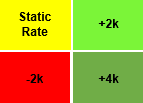 we made the right prescription. It is also very important when we place test blocks that it is in a very uniform part of the field to get accurate measurements. i.e.: drainage, elevation, soil type, etc. It is also important when you are harvesting to have a calibrated combine monitor since yield is the most effective way to gather and evaluate the data.
we made the right prescription. It is also very important when we place test blocks that it is in a very uniform part of the field to get accurate measurements. i.e.: drainage, elevation, soil type, etc. It is also important when you are harvesting to have a calibrated combine monitor since yield is the most effective way to gather and evaluate the data.
The other bonus to this form of testing for the year 2020 is that Advantage Acre® from LG Seeds is offering free VRx seeding prescriptions for growers. So, if you are interested in evaluating variable rate seeding research on your farm this year, you can do it at no additional cost!
If you have questions regarding on-farm research on your farm feel free to reach out to your local Sales Account Manager or Technical Team Agronomist for discussion. Everyone have a safe and successful planting season!
Download a copy of this technical bulletin here: Expanding Data with On-Farm Research




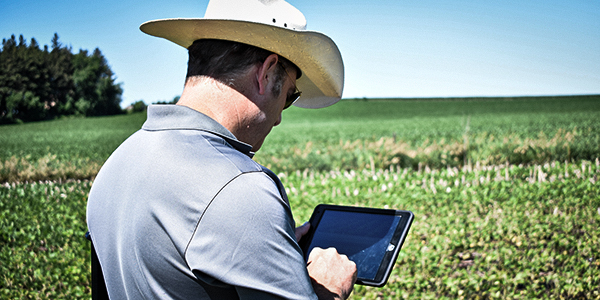

Technical Team Agronomist